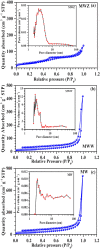Enhancing Specific Energy and Power in Asymmetric Supercapacitors - A Synergetic Strategy based on the Use of Redox Additive Electrolytes
- PMID: 27184260
- PMCID: PMC4868987
- DOI: 10.1038/srep25793
Enhancing Specific Energy and Power in Asymmetric Supercapacitors - A Synergetic Strategy based on the Use of Redox Additive Electrolytes
Abstract
The strategy of using redox additive electrolyte in combination with multiwall carbon nanotubes/metal oxide composites leads to a substantial improvements in the specific energy and power of asymmetric supercapacitors (ASCs). When the pure electrolyte is optimally modified with a redox additive viz., KI, ~105% increase in the specific energy is obtained with good cyclic stability over 3,000 charge-discharge cycles and ~14.7% capacitance fade. This increase is a direct consequence of the iodine/iodide redox pairs that strongly modifies the faradaic and non-faradaic type reactions occurring on the surface of the electrodes. Contrary to what is shown in few earlier reports, it is established that indiscriminate increase in the concentration of redox additives will leads to performance loss. Suitable explanations are given based on theoretical laws. The specific energy or power values being reported in the fabricated ASCs are comparable or higher than those reported in ASCs based on toxic acetonitrile or expensive ionic liquids. The paper shows that the use of redox additive is economically favorable strategy for obtaining cost effective and environmentally friendly ASCs.
Figures










References
-
- Reddy A. L. M., Gowda S. R., Shaijumon M. M. & Ajayan P. M. Hybrid nanostructures for energy storage applications. Adv. Mater. 24, 5045–5064 (2012). - PubMed
-
- Beguin F., Presser V., Balducci A. & Frackowiak E. Carbons and electrolytes for advanced supercapacitors. Adv. Mater. 26, 2219–2251 (2014). - PubMed
-
- Vlad A., Singh N., Galande C. & Ajayan P. M. Design considerations for unconventional electrochemical energy storage architectures. Adv. Energy Mater. 5, 1402115–1402167 (2015).
-
- Singh A. & Chandra A. Graphite oxide/polypyrrole composite electrodes for achieving high energy density supercapacitors. J. Appl. Electrochem. 43, 773–782 (2013).
Publication types
LinkOut - more resources
Full Text Sources
Other Literature Sources

